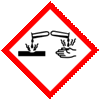| Aadhunik Industries is a manufacturing group company. Aadhunik Industries is pioneer manufacturers of Specialty Chemicals, Pharmaceutical Excipients, Food Fragrance & Flavor chemicals in India. It has toll manufacturers and representatives in UAE, Europe, Canada & USA and agents & customers in all countries like USA, Canada, Europe, UAE Dubai, South Africa, Tanzania, Kenya, Egypt, Nigeria, Uganda, Turkey, Mexico, Brazil, Chile, Argentina, Malaysia, Indonesia, Thailand, Korea, Japan, etc. Halal & Kosher certified Stannous Chloride Dihydrate Anhydrous Manufacturers made in a FDA-GMP plant is offered. |
| The units have one or more of the certifications like FDA GMP, ISO 9001, ISO 22000, HACCP, REACH, Kosher & Halal and DMF support is available. |


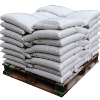
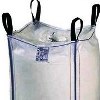
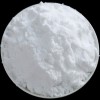
Stannous Chloride Dihydrate Anhydrous SDS GHS of Manufacturers
CAS Number Stannous Chloride Dihydrate 10025-69-1
CAS Number Stannous Chloride Anhydrous 7772-99-8
Specifications of Stannous Chloride Dihydrate Anhydrous Manufacturers
Stannous Chloride Dihydrate Anhydrous SDS GHS, Safety Data Sheet
MSDS Sheet 26-Jan-22
1. Product Identification
Product Name & Other Names: Stannous Chloride Dihydrate Anhydrous.
CAS No.: 10025-69-1 for Dihydrate & 7772-99-8 for Anhydrous.
EINECS EC-No.: 231-868-0
Relevant uses and uses advised against (if any): Industrial Manufacturing.
Suppliers: As per letterhead.
2. Hazards Identification
GHS, Globally Harmonized System Classification in accordance with 29 CFR 1910
Classification according to Regulation (EC) No 1272/2008
Acute toxicity, Oral Category 4, H302
Skin corrosion/irritation Category 1A, B, C, H314
Sensitization, Skin Category 1, H317
Acute toxicity, inhalation Category 4, H332
Specific target organ toxicity, single exposure; Respiratory tract irritation Category 3, H335
Hazardous to the aquatic environment, long-term hazard Category 1, H410
Labeling according to GHS & Regulation (EC) No 1272/2008
| GHS Label Elements 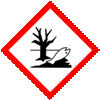 Aquatic Toxicity |
GHS Label Elements |
Signal Words: Danger
Hazard statements:
H302: Harmful if swallowed.
H314: Causes severe skin burns and eye damage.
H317: May cause an allergic skin reaction.
H332: Harmful if inhaled.
H335: May cause respiratory irritation.
H410: Very toxic to aquatic life with long lasting effects.
Precautionary statements:
P261: Avoid breathing dust/ fume/ gas/ mist/ vapors/ spray.
P262: Do not get in eyes, on skin, or on clothing.
P264: Wash skin thoroughly after handling.
P270: Do not eat, drink or smoke when using this product.
P271: Use only outdoors or in a well-ventilated area.
P272: Contaminated work clothing should not be allowed out of the workplace.
P273: Avoid release to the environment.
P280: Wear protective gloves/protective clothing/eye protection/face protection.
P330: Rinse mouth
P301+P312: IF SWALLOWED: Call a POISON CENTER or doctor/physician if you feel unwell.
P302+P352: IF ON SKIN: Wash with soap and water.
P304+340: IF INHALED: Remove victim to fresh air and keep at rest in a position comfortable for breathing.
P305+P351+P338: IF IN EYES: Rinse cautiously with water for several minutes. Remove contact lenses, if present and easy to do. Continue rinsing.
P314: Get Medical advice/attention if you feel unwell.
P330: Rinse mouth.
P301+330+331: IF SWALLOWED: Rinse mouth. Do NOT induce vomiting.
P332+P313: If skin irritation occurs: Get medical advice/attention.
P333+313: If skin irritation or a rash occurs: Get medical advice/attention.
P337+P313: If eye irritation persists: Get medical advice/ attention.
3. Composition/Information on Ingredients
Product Name & Other Names: Stannous Chloride Dihydrate Anhydrous.
CAS No.: 10025-69-1 for Dihydrate & 7772-99-8 for Anhydrous.
EINECS EC-No.: 231-868-0
4. First Aid Measures
Always seek medical attention after first aid measures are provided.
Inhalation: Remove to fresh air. If not breathing, give artificial respiration. If breathing is difficult, give oxygen. Get medical attention.
Ingestion: Never give anything by mouth to an unconscious person. Get medical attention.
Skin Contact: Wipe off excess material from skin then immediately flush skin with plenty of water for at least 15 minutes. Remove contaminated clothing and shoes. Get medical attention. Wash clothing before reuse. Thoroughly clean shoes before reuse.
Eye Contact: Immediately flush eyes with plenty of water for at least 15 minutes, lifting lower and upper eyelids occasionally. Get medical attention immediately.
5. Fire Fighting Measures
Flammability of the Product: Non-flammable.
Products of Combustion: Hydrogen chloride gas, Tin/tin oxides.
Fire Extinguishing Media: Use any means suitable for extinguishing surrounding fire. Use water spray, alcohol-resistant foam, dry chemical, or carbon dioxide.
Extinguishing Media Not recommended: None specified.
Special Information: In the event of a fire, wear full protective clothing and NIOSH-approved self-contained breathing apparatus with full face piece operated in the pressure demand or other positive pressure mode. At high temperatures under fire conditions, it may produce toxic or irritating fumes. Fire-extinguishing work is done from the windward and the suitable fire-extinguishing method according to the surrounding situation is used. Uninvolved persons should evacuate to a safe place.
6. Accidental Release Measures
Personal precautions, protective equipment, and emergency procedures: Avoid breathing dust/fumes/gas/mist/vapors/spray. Use individual protective equipment (waterproof boots, suitable protective clothing, safety glasses, etc.). Restrict unprotected personnel from the area. Prevent any contact with hot surfaces. Do not approach facing the wind.
Environmental precautions: Do not let the product enter drains, soil, or water sources.
Methods and materials used for containment cleanup procedures and Storage: It is a corrosive solid. Do not inhale dust, vapors, mist, or gas. Avoid dust formation. Contain spilled material. Cover with an inert, non-combustible absorbent material, (e.g. sand, earth, diatomaceous earth, vermiculite). Use a shovel to put the material into a convenient waste disposal container. Finish cleaning by spreading water on the contaminated surface and evacuate as per law.
7. Handling and Storage
Precautions for safe handling: Do not ingest. Do not breathe dust. Apply according to good manufacturing and industrial hygiene practices. Ensure proper ventilation. In case of insufficient ventilation, wear suitable respiratory equipment. Wash thoroughly after handling. Do not drink, eat, or smoke while handling. Avoid contact with skin, eyes, and clothing. Minimize dust generation. Avoid breathing dust/fumes/gas/mist/vapors/spray. Use individual protective equipment (waterproof boots, suitable protective clothing, safety glasses, etc.).
Conditions for safe storage, including any incompatibilities: Store in cool, dry, and ventilated area away from heat sources and protected from sunlight in tightly closed original container. Keep air contact to a minimum. Store protected from heat, sparks and ignition sources and incompatible materials. Do not store with incompatible materials like strong oxidizing agents, metals & acids.
8. Exposure Controls/Personal Protection
Airborne Exposure Limits:
USA ACGIH ACGIH TWA (mg/m³): 2 mg/m³
USA OSHA OSHA PEL (TWA) (mg/m³): 2 mg/m³
Ventilation System: A system of local and/or general exhaust is recommended to keep employee exposures as low as possible.
Personal Respirators (NIOSH Approved): For conditions of use where exposure to dust or mist is apparent and engineering controls are not feasible, a particulate respirator may be worn.
Skin Protection: Wear protective gloves and clean body-covering clothing.
Eye Protection: Use chemical safety goggles and/or full face shield where dusting or splashing of solutions is possible. Maintain eye wash fountain and quick-drench facilities in work area.
Other Control Measures: Maintain good housekeeping in work area.
9. Physical and Chemical Properties
Appearance: Stannous Chloride Dihydrate is white powder or crystals.
Odor: It is odorless.
Odor threshold: Not available.
pH: Not available.
Relative density: around 2.71
Boiling Point: 652C.
Melting Point: 37 - 38C.
Flash point: Not available.
Auto-ignition temperature: Not available.
Decomposition temperature: Not available.
Upper/lower flammability or explosive limits: Not available.
Vapor pressure: Not available.
Vapor density: Not available.
Evaporation rate: Not available.
Flammability (solid, gas): Not available.
Partition coefficient: n-octanol/water: Not available.
Solubility: It is freely soluble in water.
Viscosity: Not available.
10. Stability and Reactivity
Stability: Stable under ordinary conditions of use and storage.
Hazardous Decomposition Products: It emits toxic chlorine or hydrogen chloride fumes when heated to decomposition.
Hazardous Polymerization: Will not occur.
Incompatibilities: Strong oxidizing agents, metals & acids. Also incompatible with potassium, Bromine trifluoride, Hydrazine, Ethylene oxide, Metals, organic nitrates sodium, hydrazine, nitromethane, acetylene, sodium hypobromite, alcohols. Halogens.
Conditions to Avoid: Incompatibles and moisture.
11. Toxicological Information
Toxicity data: LD50 oral rat: 700 mg/kg.
Carcinogenic Effects: No component of this product present at levels greater than or equal to 0.1% is identified as possible or confirmed human carcinogen by IARC, ACGIH, NTP, OSHA.
Mutagenic Effects: Not available.
Teratogenic Effects: Not available.
Developmental Toxicity: Not available.
12. Ecological Information
LC50 other aquatic organisms 1: 37 mg/l (24 h; Daphnia magna; Anhydrous form)
EC50 other aquatic organisms 1: 50.1 mg/l (96 h; Crangon sp.; Anhydrous form)
EC50 other aquatic organisms 2: 71.8 mg/l (48 h; Crangon sp.; Anhydrous form)
Environmental Toxicity: Harmful to aquatic life in exceptionally low concentrations.
Results of PBT and vPvB assessment: This substance/mixture contains no components considered to be either persistent, bioaccumulative and toxic (PBT), or very persistent and very bioaccumulative (vPvB) at levels of 0.1% or higher.
13. Disposal Considerations
Whatever cannot be saved for recovery or recycling should be managed in an appropriate and approved waste disposal facility.
14. Transport Information
DOT USA, TDG Canada & ADR/RID Europe:
UN number: 3260 Class: 8 Packing group: III
Proper shipping name: Corrosive solid, acidic, inorganic, n.o.s. (Stannous chloride).
IMDG/IMO:
UN number: 3260 Class: 8 Packing group: III EMS-No: F-A, S-B
Proper shipping name: Corrosive solid, acidic, inorganic, n.o.s. (Stannous chloride).
ICAO/IATA:
UN number: 3260 Class: 8 Packing group: III EMS-No: F-A, S-B
Proper shipping name: Corrosive solid, acidic, inorganic, n.o.s. (Stannous chloride).
15. Regulatory Information
USA:
SARA 311/312 Hazards: See section 2.
California Prop. 65 Components: Not listed.
16. Other Information
DISCLAIMER: The information and recommendations set forth herein are presented in good faith and believed correct as of the date hereof. It is compiled from various sources, and it is not necessarily all inclusive nor fully adequate in every circumstance. In addition, these suggestions should not be confused with nor followed in violation of applicable laws, regulations, rules, or insurance requirements applicable. This SDS MSDS sheet is intended only as a guide to the appropriate precautionary handling of the material by a professionally trained person using this product. Individuals receiving the information must exercise their independent judgment in determining its appropriateness for a particular purpose. This shall not constitute a guarantee for any specific product features and shall not establish a legally valid contractual relationship. In no case shall our company be liable to loss or damages by the product user.Stannous Chloride Dihydrate Anhydrous Manufacturers
Aadhunik Industries
Ankleshwar Gujarat &, Mumbai, India
TEL: (OFFICE) 91-22-23774610, 23723564.
e-mail: info@aadhunikindustries.com

Exports to USA, Canada, UAE, Dubai, South Africa, Tanzania, Kenya, Nigeria, Egypt, Uganda, Turkey, Mexico, Brazil, Chile, Argentina, Europe Netherlands, Italy, Spain, Germany, Portugal, France, Malaysia, Indonesia, Thailand, Korea, Japan, Vietnam, etc.
Copyright and Usual Disclaimer is Applicable January 26, 2022
